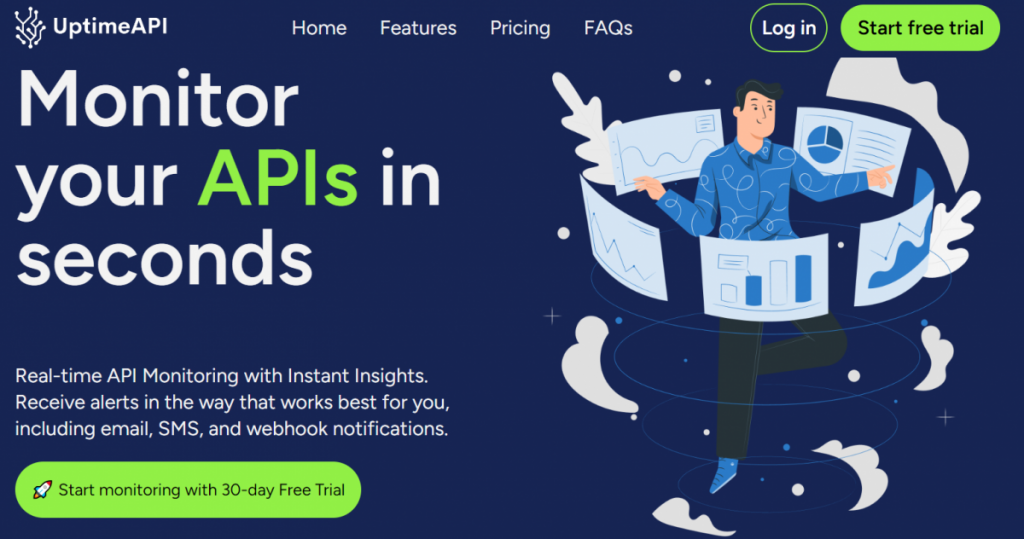In the fast-paced world of software development, ensuring the real-time monitoring of APIs is essential for maintaining optimal performance and delivering a seamless user experience. As developers strive to create robust applications, having a reliable tool for API monitoring becomes a game-changer. This article serves as a quick guide for developers, introducing UptimeAPI and exploring the nuances of API responses for effective real time monitoring.
Why Real-Time API Monitoring Matters:

Real-time API monitoring is crucial for developers seeking to identify and resolve issues promptly. Whether it’s monitoring response times, error rates, or overall uptime, having instant insights allows developers to react swiftly and maintain the reliability of their applications.
UptimeAPI: A Developer’s Go-To Solution:
UptimeAPI is a specialized tool designed with developers in mind, providing a comprehensive solution for real-time API monitoring. With its user-friendly interface and powerful features, UptimeAPI empowers developers to keep a close eye on the health and performance of their APIs.
Key Features of UptimeAPI for Developers:

- Instant Notifications:
- UptimeAPI sends instant notifications when there are deviations from expected API performance. Developers can receive alerts for issues such as increased response times or elevated error rates, enabling them to take immediate action.
- Detailed Performance Metrics:
- The platform provides in-depth performance metrics, including response times and error rates. Developers can access detailed insights into how their APIs are performing, helping them pinpoint areas for optimization.
- Historical Data Analysis:
- UptimeAPI stores historical data, allowing developers to analyze trends over time. This feature aids in identifying recurring issues, planning for scalability, and making data-driven decisions for continuous improvement.
- Customizable Alerts:
- Developers can set up customizable alerts based on specific performance thresholds. Whether it’s a sudden increase in response times or a spike in error rates, UptimeAPI ensures that developers are notified promptly, facilitating rapid issue resolution.
Understanding UptimeAPI’s API Responses:
When integrating UptimeAPI into your development workflow, understanding the language of API responses is key. Here’s a breakdown of the API responses provided by UptimeAPI:
- HTTP Status Codes:
- 200 OK: The API request was successful.
- 404 Not Found: The requested resource was not found.
- 500 Internal Server Error: The API encountered an unexpected condition, indicating a potential issue that requires attention.
- Response Time:
- UptimeAPI measures the time it takes for an API to respond to a request. Developers can use this metric to assess the performance of their APIs and identify any deviations from the norm.
- Error Rates:
- UptimeAPI tracks the percentage of API requests that result in errors. High error rates may signal issues with the API’s functionality or connectivity problems that developers need to investigate.
- Uptime Percentage:
- This metric represents the percentage of time the API has been available and responsive. Developers aim for high uptime percentages to ensure continuous service availability to end-users.
Conclusion:
Real-time API monitoring is a critical aspect of modern software development, and UptimeAPI emerges as a developer-friendly solution for this purpose. By integrating UptimeAPI into their workflows, developers can receive instant insights into API performance, enabling them to address issues promptly and deliver a reliable user experience. This quick guide introduces developers to the key features of UptimeAPI and provides insights into interpreting API responses, empowering them to create robust and resilient applications in the dynamic world of software development.
Read More: Company profile APIUsage Cases

